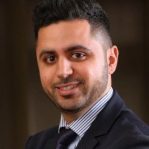What Sport Means for Peace in the Middle East
Sports promotes cooperation, builds a common identity, and provides an overarching language to communities in conflict. I learned it first hand, because tennis changed my life. Growing up as a Palestinian citizen of Israel, I struggled with an identity crisis, feeling caught between two worlds. But when I was 8, I started playing tennis in Haifa. Eventually I became the first Arab Muslim on the Israeli junior national team, representing the country in European and world championships. This was a personal success. More important, though, it gave me a platform for building bonds with Jewish youth.
Once my parents realized the sport’s potential to bring people together, they established the Coexistence Program at the Israel Tennis Center in Haifa. It introduced young Arabs and Jews to the game, while transforming on-court partnerships into off-court friendships. The program, which began in 2001 with around 10 children, now operates nationwide with hundreds of participants. The tennis court was an island where everyone felt like they belonged. I built trust with my doubles partner and the people on the other side of the net, too.
When I was growing up, Israeli high schools and colleges did not have organized sports. But Americans know well the power of sports, as I learned when I came to Quinnipiac University in Connecticut on a tennis scholarship. Even though my teammates and I came from different corners of the world, we were all Bobcats. We embraced the same identity. Social psychologists have a name for this phenomenon of a shared, complex identity. They call it a “superordinate identity.” For that reason, Israelis and Palestinians can benefit from the existence of sports programming. Early participation in sports can emphasize the common, athletic identity, which could mitigate potential bias in the future. Ultimately, children from different religions, ethnicities, and socioeconomic backgrounds could grow to see each other as one.
Playing sports can help reframe a conflict. It builds the groundwork for cooperation by putting teammates in the same boat. To paraphrase the late Morton Deutsch, a professor at Teachers College, Columbia University, this creates a positive interdependence: ‘If you swim, I swim, and if you sink, I sink.’ It galvanizes people to do what is best for the team. If another player is in a better position to score than you are, you will pass the ball. Integrating sports into a system strengthens it. It can weave and expose potential brokers and innovators in it.
Sports recognizes no language barriers. It is especially impactful in multilingual nations. In Israel, while learning Hebrew in school is a requirement beginning at first grade, Arabic is only optional, and not until the third grade. It is similar to how American children may learn to speak French in high school. How much of your high school French do you remember? Now, imagine that French is one of the official languages of your country. Unfortunately, that is the case for Arabic in Israel. Essentially, Arab and Jewish children grow with a communication gap that hinders their ability to make friends. But drop a soccer ball into a group of Palestinian and Israeli kids, and watch what happens. An introduction will be unnecessary, let alone an explanation of the rules. Instead players communicate using their bodies within an established system of rules that makes them “speak” soccer fluently.
Just as sports altered my path, it has the power to change my home region. Athletics can be used as a tool for tackling social issues that the political structures have failed to solve. Sports are more than mere games. They’re essential to the healthy transformation of the Middle East.

